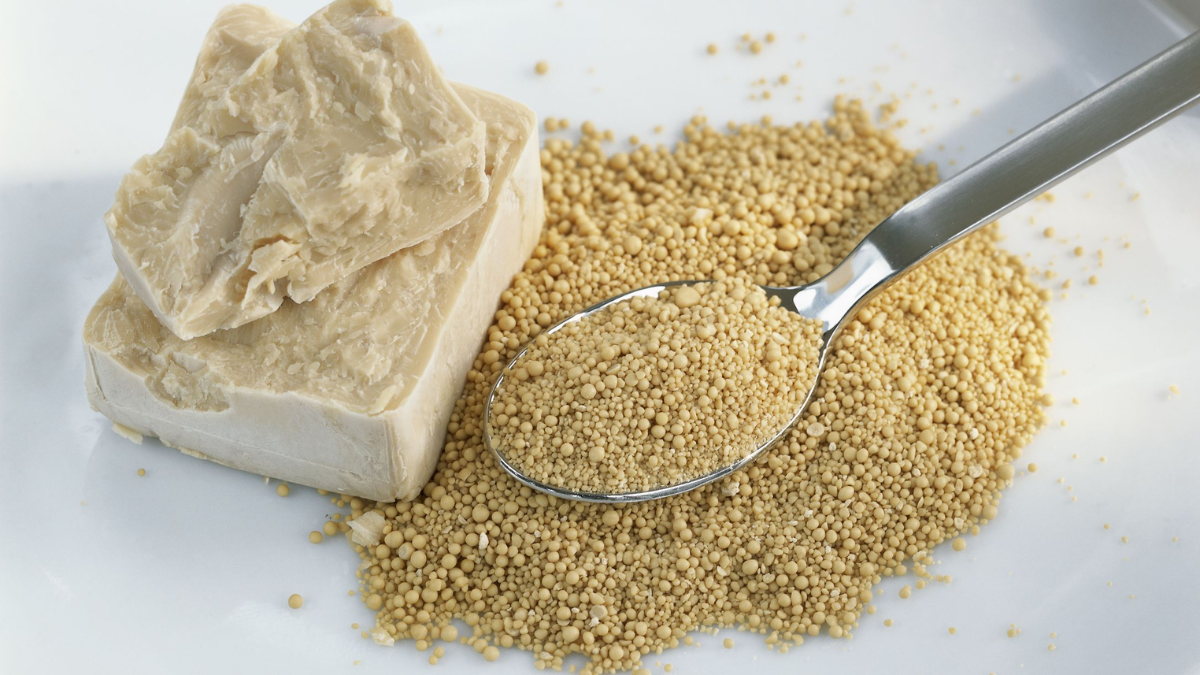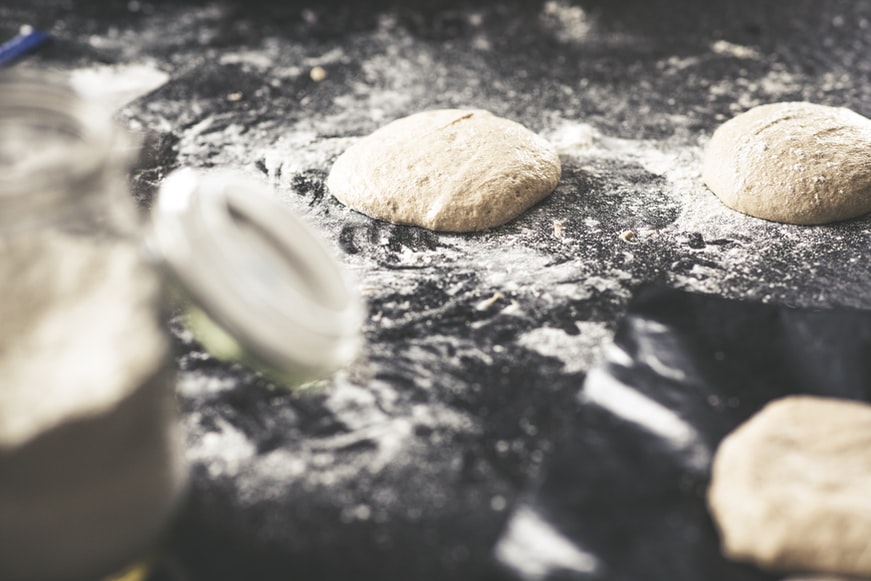If you wonder how to tell if yeast is good or not, this article will help you make an informed decision. While yeast has a relatively long shelf life, it can go wrong when stored improperly or too long. If you notice that the yeast is “tired” or “unhealthy,” it’s probably spoiled. You can also test the yeast to ensure it is still active and potent by proofing it before using it in recipes.
Yeast Nutrition Facts
Here’s a table of the nutrition facts for 100 grams of yeast, based on information from the USDA FoodData Central:
| Nutrient | Amount | % Daily Value* |
| Calories | 321 | 16% |
| Total Fat | 4.6 g | 7% |
| Saturated Fat | 0.8 g | 4% |
| Cholesterol | 0 mg | 0% |
| Sodium | 38 mg | 2% |
| Total Carbohydrate | 47 g | 16% |
| Dietary Fiber | 24 g | 96% |
| Total Sugars | 0 g | |
| Protein | 45 g | 90% |
| Vitamin D | 0 mcg | 0% |
| Calcium | 61 mg | 6% |
| Iron | 7.5 mg | 42% |
| Potassium | 1200 mg | 34% |
Note: Percent Daily Values are based on a 2,000-calorie diet. Your daily values may be higher or lower depending on your calorie needs.
What Is Yeast?
Yeasts are single-celled microbes that are hundreds of millions of years older than humans. There are around 1,500 different yeast species, but the one we’re interested in today is saccharomyces cerevisiae, which is taken from Latinized Greek and means “sugar-fungus.”
Baker’s yeast and brewer’s yeast are among the yeast types responsible for our favorite carb-heavy treats: bread and alcohol. They work by feeding on carbohydrates and converting that food into carbon dioxide (and, given enough time, alcohol), giving your baked products and beer that soft, airy structure you enjoy.
How To Tell If Yeast Is Good Or Bad?
When working with fresh yeast, ensure it hasn’t been exposed to too much heat, cold, or moisture. A tablespoon of sugar in warm water can also test the yeast. This will help you determine whether or not the yeast is active. If it’s not in use, toss it out. Yeast that is no longer active should be discarded.
Proof your yeast first if you’re unsure if it’s healthy or harmful. It won’t work unless it’s turned on. You can also check the water’s moisture content. The yeast will die at a higher temperature. Otherwise, look into its motive force. If you’re baking bread, be sure the yeast is active. You can test the yeast a few days before creating your dish by using it.
Here are some most straightforward ways to determine whether yeast is good or bad:
- Checking the yeast with sugar is one of the simplest ways to determine if it is still viable. Use a half-cup of room-temperature liquid and add a teaspoon of sugar.
- Leave the mixture for ten minutes. If it does not rise after this time, it is likely that the yeast isn’t fresh and should be thrown away. If you’re still unsure, try proofing the yeast yourself.
- Proofing yeast is essential for a successful bake. To activate the yeast, the water needs to be warm, and if the water is too hot, the yeast will die.
- If the water is too cool, the yeast will not be active. Once the yeast is activated, allow it to rest for ten minutes. After ten minutes, the liquid should rise above the mark of one cup. If the yeast doesn’t rise after this time, throw it out and try again.
- Proofreading is the first step. To prove your yeast, you must provide it with the proper living conditions. Yeast thrives in a warm atmosphere, but it cannot survive in extreme heat.
- To thrive, it needs to be moist and sweet. The water should be at least 80degF. Once the yeast has been proven, it will continue to be active.
How To Store Yeast To Extend Its Shelf Life?
Yeast that is properly stored can last longer, allowing you to avoid running to the shop for a single package of yeast. Keep yeast somewhere cool, dry, and dark. If possible, use yeast before the best-by date, though you can always test yeast a bit past this date. If you buy yeast in bulk (like the jars you see in supermarkets), you can keep it in the fridge or freezer to extend its shelf life.
Here are Some Steps for Extending its Shelf Life:
- Yeast is a live organism that, like yogurt cultures, becomes less active with time. When exposed to air, moisture, and heat, it perishes considerably faster, as do most edibles.
- Packages that have not been opened should be kept in a cabinet or another excellent, dry location (a refrigerator is fine too, but not necessary until it is opened).
- After opening the package or jar, it must be refrigerated (or frozen) in an airtight container with as much air as possible squeezed out.
- Dry yeast can be frozen for up to 6 months after opening for a long-term solution.
- Dry yeast should always be warmed to room temperature before use, so only take out what you need from the fridge or freezer 30-40 minutes before you need it.
- Cake yeast (also known as compressed yeast) is much more perishable than dry yeast and must be kept refrigerated at temperatures below 45°F to keep its freshness and activity.
- The remaining cake yeast should be carefully wrapped and stored in an airtight container in the refrigerator, and it’s not a good idea to freeze it.
Can You Use Expired Yeast?
Expired yeast can be used as long as some are still active. Yeast that has reached the end of its useful life will take longer to grow and raise the dough, so save it for bread that doesn’t require eggs or a lot of sugar (those bread recipes require strong proof that weak yeast can’t deliver).
You can use yeast that has passed its expiration date to make dough. However, your dough may not rise as well as it would if you used freshly purchased yeast (or it may not rise at all). This has happened to me on a few occasions.
It was, to say the least, frustrating after using up all that excellent flour and spending all that time preparing and kneading the dough. So now I know to always proof old yeast packets before putting them in the dough.
Conclusion
When you bake, you should always proof the yeast before using it. It is essential for baking because it makes the dough rise. Using it without proofing will ruin your baking. But if the yeast isn’t active, you can use it again. Any grocery shop will sell proofed yeast. After you buy it, you can also read the package to find it. A quick test can be used to determine its freshness.


